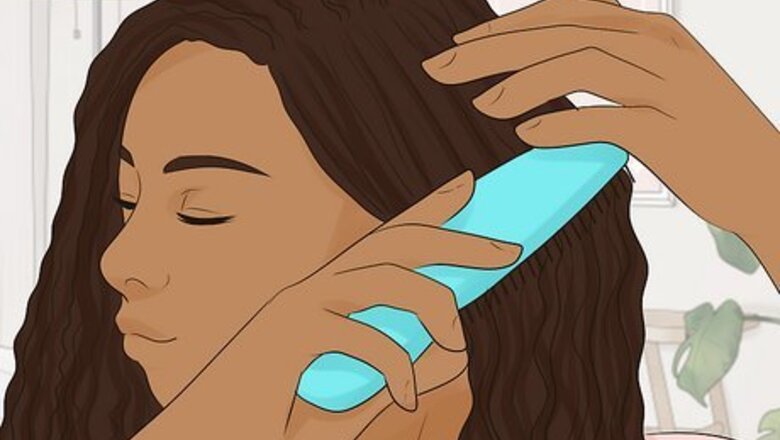
views
Combing out Your Hair
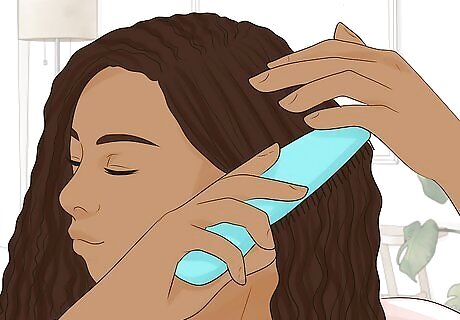
Comb through your hair to detangle it. Braiding your hair will be easier if it's free of knots and tangles. Run a comb or brush through your hair, working on 1 to 2 inches (2.5 to 5.1 cm) at a time; whatever kind of comb or brush you prefer is fine. Start at the tips, combing down, so you don't pull as much on the roots. As the tips get detangled, move your way up, still combing down through your hair. Brush a detangling product through your hair if you need a little extra help getting the tangles out.
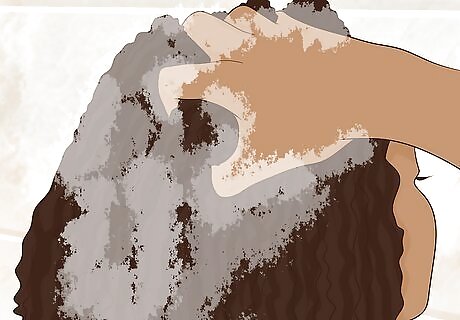
Wash and condition your hair as you normally would. It's best to start with clean hair for this process. Massage shampoo into your scalp and hair for a few minutes and then rinse it out. You can shampoo twice if your hair is particularly dirty. Then, work conditioner into your hair for a few minutes before washing it out. If you use a lot of products on your hair, you may want to try a clarifying shampoo; its purpose is to strip your hair of all the buildup. Look for a shampoo labeled as "clarifying" in the drugstore and use it as you would any shampoo.
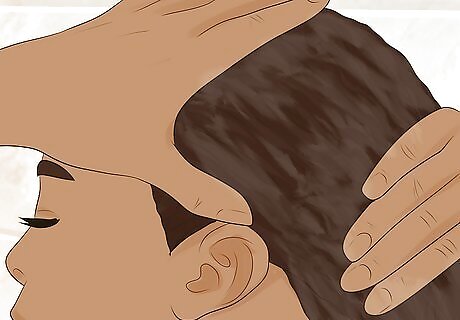
Apply a moisturizer to your wet hair. Try a leave-in deep conditioner, a hydrating oil, or even a mask. Typically, you apply these to your hair without washing them out. However, always read the label; with some, you leave them in for an hour or so before rinsing them out. Try looking for a gentle moisturizer, one that's free of sulfates and drying alcohols. For instance, try one that's Curly Girl approved. Any kind is fine as long as it's gentle on your hair.

Blow dry your hair and brush it again. Clip most of your hair on the top of your head except the bottom layer; you can use a rat-tail comb to separate it out by making a horizontal part across your hair. Draw out a section of hair just as wide as your brush from the bottom layer. Pull the brush down the hair as you aim the blow dryer down. Repeat the motion until the area is dry. Once it is, move on to another area. Eventually, begin pulling down the layers that are clipped up above, drying them in the same way. A round brush is good for this process. You can also let your hair air dry, but blow drying your hair will help to give your braids a sleeker look, especially if your hair is curly, thick, or wavy. Hold the blow dryer 6 inches (15 cm) away from your hair.
Parting Your Hair
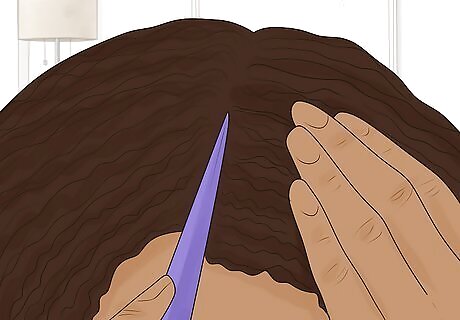
Part your hair with a rat-tail comb. Start at front of your hair and run the comb along a line to the back. Use the teeth of the comb to separate the hair to each side. You can make as many parts as you want, from just 1 part for 2 braids to 5-6 parts for 6-7 braids. Space the parts evenly across your head. Clip or tie up the hair for each section before moving on to the next one. You can also make wavy parts by moving the comb back and forth as you go from the front to the back.
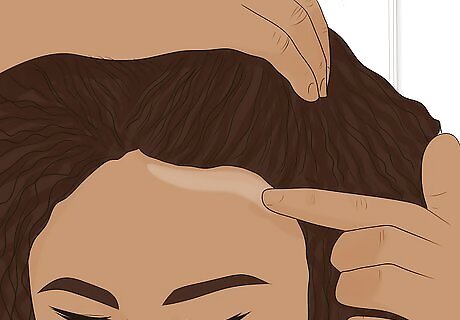
Use edge control all around the edges of your hair. Get a dollop of edge control cream or gel into your hand, about the size of a grape. Rub the cream or gel into place, moving from the very front edge into your hair 1 to 2 inches (2.5 to 5.1 cm). Smooth it into the edge with your fingers. Do the same at the sides and back of your hair, always moving up towards the crown. You will need edge control throughout the process to keep your hair in place. It's a cream or gel that smooths out the edges and holds them in place. You can find it in drugstores or online.
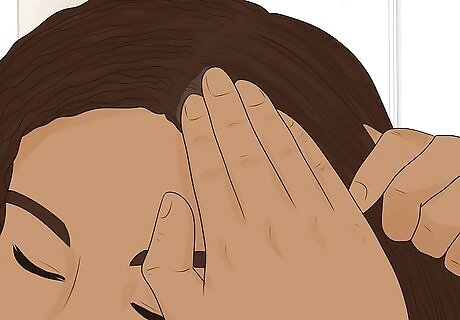
Rub edge control into the parts to make them neat and clean. This will also help to smooth flyaways and promote shine. Separate your hair along each part. Rub from the middle of the part out towards the hair so you smooth it into place for the braid. You'll likely need another grape-sized dollop of edge control for this process. You can put edge control on the back of your hand so you have easy access to it.
Braiding Your Hair
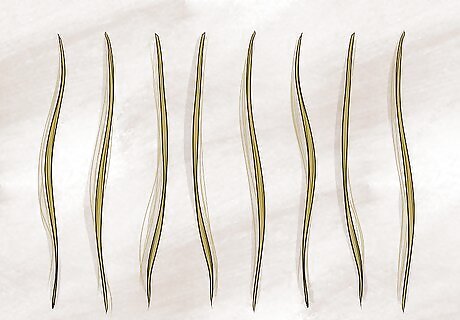
Separate the braiding hair extensions into 7-8 or sections per braid. Take the hair out of the package. Create small sections with progressively more hair as you separate them out. The smallest section should have 15-20 strands; the largest section might have 50-100 strands. It depends on how big you want your braids to get; experiment with different sizes to see what you like. You can use extensions that match your hair or ones in fun colors. You will likely need several packages of hair, as you need 7-8 sections for every braid you create.
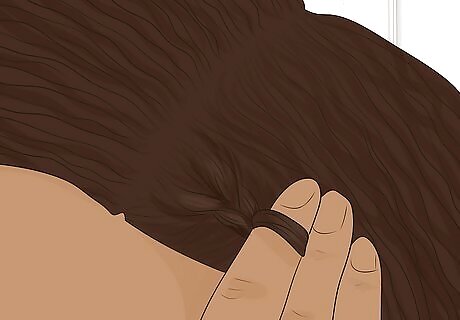
Braid the first part of one section of natural hair to start a cornrow braid. Separate the section near the front into 3 parts; start braiding about 0.5 in (1.3 cm) from the front. Cross the right part over the middle part so the right part is now the middle one. Cross the left part over the middle part, which becomes the middle part. Add a little hair to the middle part from the remaining natural hair as you move down the head. Do this for about 1 inch (2.5 cm) or so before adding the fake hair.
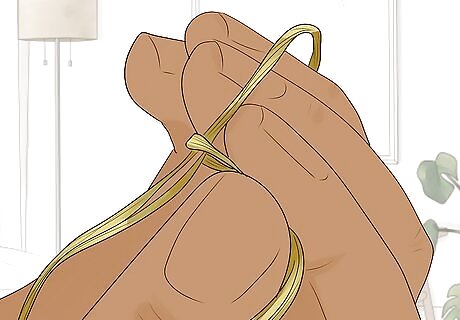
Make 3 strands out of the smallest section of hair extensions. Grab the smallest section and separate it into 2 sections with one about twice the size as the other. Loop the strands around each other like 2 "U"s meeting at the bottom or like 2 chain links meeting. Let the smaller section come together with its other side over the other strand to form 1 section. Let the other 2 strands stay separated. Pinch the joined section together near the top with your index finger and thumb, then twist it slightly. Turn it underneath the other 2 strands and come up between them. Grab the opposite side with the same fingers and let the 3rd strand hang over your thumb. You should have 2 strands of the braid pinched in your finger and thumb and the third over your thumb.

Braid the hair extension into your hair. With the same index finger and thumb you have the hair extensions in, pick up the middle section of hair where you've been braiding. Draw it into one of the hair extension sections. Grab the right section of hair and pull it into the other hair extension section you have pinched in your fingers. Cross both the hair and the hair extension over the middle section that includes both hair and hair extension. Pull the other strand of hair extension into the left part and pull it over the middle. Keep in mind that every part of the extension should look like it is part of your own hair. The braids should be flat and blend into your hair so that the extensions are not noticeable.
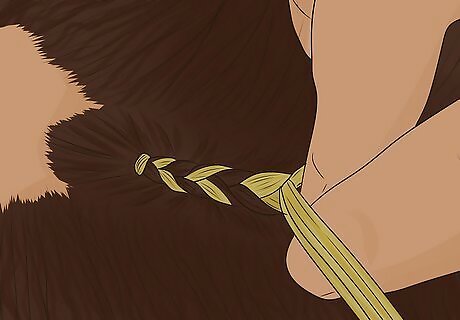
Braid down 0.5 in (1.3 cm) or so before adding the next section. Keep braiding like you normally would, bringing the right side over the middle and then the left side over the middle (which was the right side). Keep drawing the natural hair into the middle of the braid a little at a time so it stays close to the head.
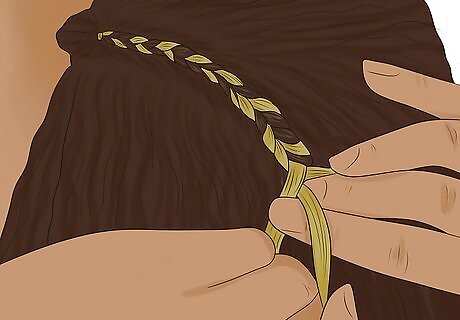
Set the next section of extensions under the braid. Instead of twisting it into 3 pieces, just grab the hair extension in the middle. Place the loop underneath the braid, and join 1 arm of the hair extension into the left side and 1 arm into the right side. Continue braiding for 0.5 in (1.3 cm) or so.
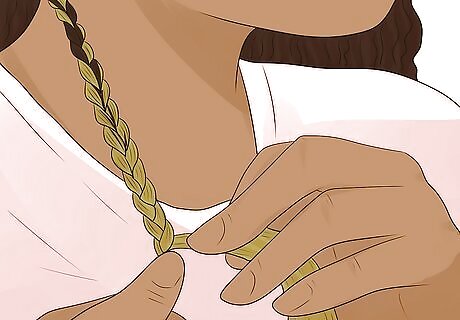
Continue adding sections as you go down the braid. Add a new section of hair extension every time you feel it thinning out a bit. Make sure to feed in the same amount of hair every time. Continue to add hair from the head into the middle of the braid. When you reach the nape of the neck, you should have all the hair from that section on the head incorporated into the braid. At that point, just continue braiding down the rest of the hair until you reach the end. You can continue to add hair extensions even after you get to the nape of the neck if you want the braid to be longer. Just grab the hair extension in the middle and loop it under the braid, incorporating the strands into the sides of the braid. You can use a little edge control to keep the end of the braid in place, or you can burn the ends slightly with a lighter or dip them in hot water to seal them. These options will give your braids a neater look than adding hair ties at the ends.

Repeat the process for each part on your head. Once you get done with the first braid, the fun has just begun! Braid extensions into each of the parts on your head one at a time. At the end, you can add a mousse, moisturizer, or edge control over the braids to help keep them in place.


















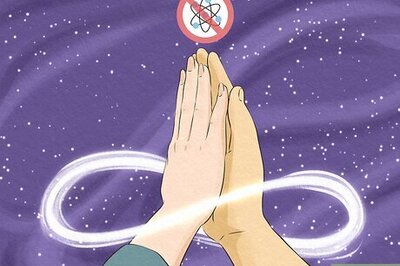

Comments
0 comment